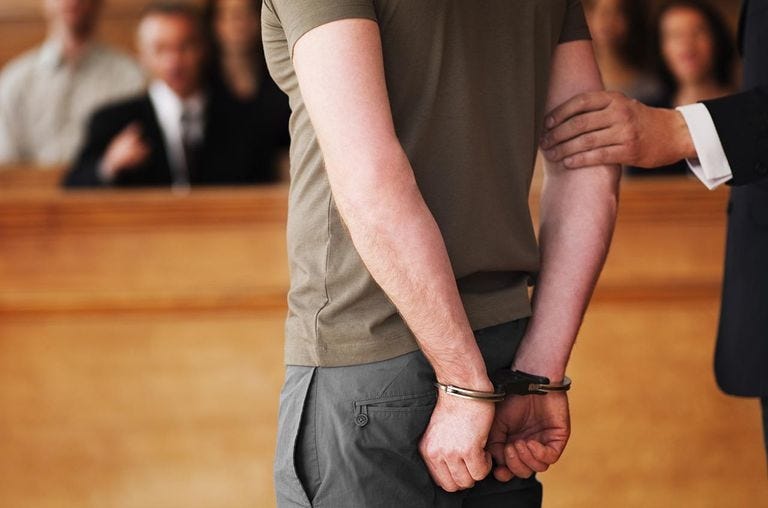![The rate of juveniles filed into the adult prison system in Florida's Circuit 1 is 24.4 percent, triple the state average of 8.8 percent. [Pixabay.com]](http://127.0.0.1/wordpress/wp-content/uploads/2022/01/ghows-DA-6a9d89c6-7d25-23c3-e053-0100007f5dd2-f0cef556.jpeg)
MILTON — Since leaving her family practice, retired physician Dr. Paula Montgomery spends her time advocating for juvenile delinquents along with the League of Women Voters. Florida has the highest number of juveniles in the adult prison system in the country.
According to data from the Florida Department of Juvenile Justice, Circuit 1 — Escambia, Santa Rosa, Okaloosa and Walton Counties — has the highest rate of direct-filed children, compared to all eligible for direct file, at 24.4 percent. The state average is 8.8 percent. The state's direct-file statute allows prosecutors to move a range of juvenile cases to adult court without a judge's input.
“That will blow your mind,” Montgomery said. “Why is it that way?”
According to the 2017 report on Florida by the State of America’s Children, a total of 131 children were in adult jails or prisons in Florida in 2015. That same year, the Florida Supreme Court ruled that juveniles not convicted of murder may not be sentenced to life in prison, and those convicted of murder may not be sentenced to life without parole, citing that children are less liable and more agreeable to rehabilitation.
But is the adult prison system rehabilitating these children? Montgomery says no.
“The juvenile system is set up to include education and rehabilitation,” Montgomery said. “There’s really no arrangement for that in the adult prisons. Some of them have a way the kid can get a GED eventually… In Florida, you’re not eligible for [college coursework] until three years before your release… The adult system is keyed in on punishment.”
Montgomery said she talks to different organizations — most recently, the Milton Rotary Club — and people are resistant to believe these facts. Montgomery gets some of her data from the Florida Legislature Office of Program Policy Analysis and Government Accountability, which shows that the average age of juvenile cases directly filed into adult criminal court by the state attorney is 16.4, and the most common offense is burglary.
The 2017 Florida Policy Institute Report found that 63 percent of youth in prison are incarcerated for drug use, disorderly conduct, probation violations, property crimes and status offenses, such as running away.
“Research has shown that committing every youth offender to prison runs counter to the dual goals of making Florida safer and rehabilitating offenders to become productive and contributing members of the community,” the report said. “Youth imprisonment is ineffective and has produced a range of negative outcomes for affected youth, communities and taxpayers.”
This is the same stance Montgomery has and continues to fight for. So why are the juvenile delinquents of Circuit 1 continuing to be filed into the adult prison system?
“The reason that my numbers are higher is a number of things,” Bill Eddins, State Attorney of Circuit 1, said. “If you go back 13 years since I’ve been in office, you will see that the number of juveniles that were transferred from juvenile court to adult court initially went down until a few years ago when it trended back up.”
Eddins cites a crisis in the first circuit approximately three years ago where juvenile gangs burglarized cars and homes.
“I decided to take a very aggressive approach about transferring juvenile gang members who committed a large number of burglaries… or who committed violent crimes to adult court,” Eddins said. “As a result, the numbers… increased pretty dramatically. However, those numbers have now begun to trend back down.”
Eddins said in the past, he transferred a lot of older juveniles — teens up to 19 years old the juvenile justice system was overseeing for crimes they committed before they turned 18 — to adult court. However, he has recently changed his philosophy.
“I decided that unless it’s a violent crime, or… they have a bad record, I’m not going to be as aggressive about transferring older juveniles to adult court,” Eddins said.
According to Eddins, transferring a child to the adult court system does not mean they will be sent to an adult prison rather than a juvenile justice facility. Under state law, the judge has the final say on the child's sentence.
The number of direct-filed children has been decreasing statewide — down 24 percent in the last five years — but the numbers in Santa Rosa County are beginning to rise again after a decline. Santa Rosa’s rate is down 2 percent from five years ago, but up 6 percent since last year.
This article originally appeared on Santa Rosa Press Gazette: State holds highest rate of juveniles in adult prision
